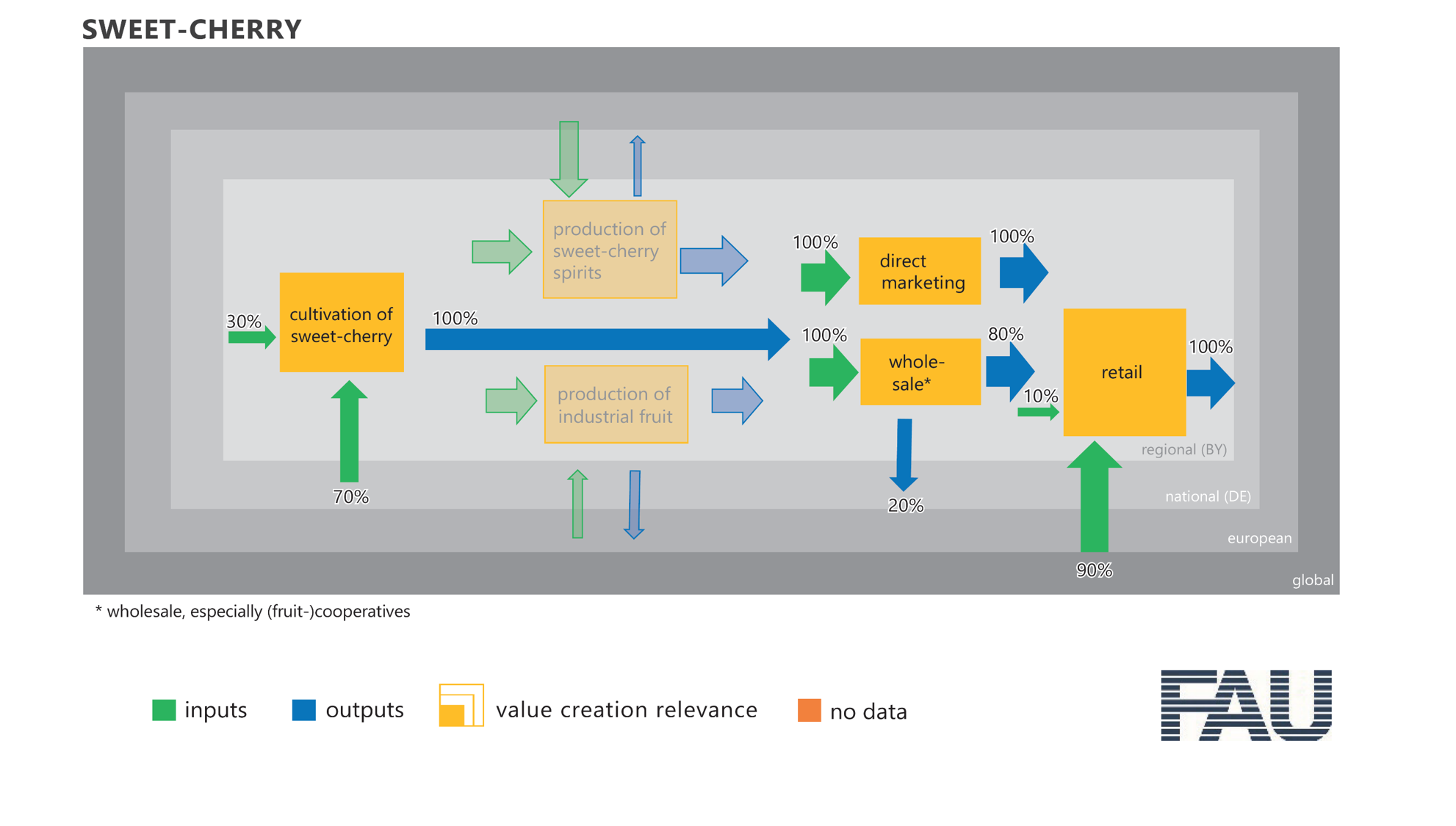A new paper from our team reflects on the question to what extent regional food supply chains support the status of agricultural demand in the competition for land. The main objective of our paper is to understand the role of proximity between the different stages of value creation. Our empirical study on the example of three food products (beer, sweet cherry, asparagus) in Bavaria (Germany) shows that short distances within food value chains support the agricultural condition in land use dynamics. The paper presents a new tool to capture value creation and the spatial dimension at a glance – the so-called ‘value creation mapping’.
 Our findings are based on arguments of efficiency, tacit knowledge, networks and product reputation, basically in neoclassical and relational arguments of economic geography.
Our findings are based on arguments of efficiency, tacit knowledge, networks and product reputation, basically in neoclassical and relational arguments of economic geography.
The results arise from the ReProLa project (Regional Product Specific Land Management in City-Land Partnerships in the Nuremberg Metropolitan Region), which is funded since 2018 by the German Federal Ministry of Education and Research.
To cite this article: Bertram, D., Chilla, T., Wilhelm, C. (2021): Short Value Chains in Food Production: The Role of Spatial Proximity for Economic and Land Use Dynamics. Land 10(9): 979. DOI: https://doi.org/10.3390/land10090979
Alternatively have a look at ResearchGate.
For another publication of our team on food geography see ‘The EU Food Label ‘Protected Geographical Indication’: Economic Implications and Their Spatial Dimension’.

